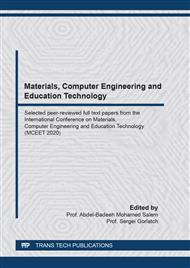p.263
p.272
p.282
p.291
p.302
p.309
p.318
p.331
p.341
Estimation of Parameters of Hyperbolic Functions with Additive Noise
Abstract:
Hyperbolic functions are widely used to write solutions to ordinary differential equations and partial differential equations. These functions are nonlinear in parameters, which makes it difficult to estimate the parameters of these functions. In the paper, two-step algorithms for estimating the parameters of hyperbolic sine and cosine (sinh and cosh) in the presence of measurement errors are proposed. At the first step, the hyperbolic function is transformed into a linear difference equation (autoregression) of the second order. Estimation in the presence of noise of observation of autoregression parameters using ordinary least square (OLS) gives biased estimates. Modifications of the two-stage estimation algorithm based on the use of the method of total least squares (TLS) and the method of extended instrumental variables (EIV), hyperbolic sine and cosine in the presence of errors in measurements are proposed. Numerical experiments have shown that the accuracy of the parameter estimation using the proposed modifications is higher than the accuracy of the estimate obtained using the ordinary least squares method (OLS).
Info:
Periodical:
Pages:
302-308
Citation:
Online since:
April 2021
Price:
Сopyright:
© 2021 Trans Tech Publications Ltd. All Rights Reserved
Share:
Citation:


